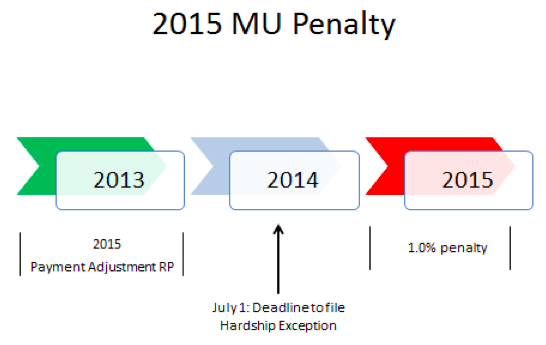 March is now in full swing and last night the field for the annual men’s college basketball tournament was announced. Office productivity around the country will take a hit later in the week as the Madness known as the NCAA tournament attracts attention. If you are a college hoops fan, I wish you well. If you are not, I hope you will tolerate the rest of us as we spend countless hours tracking simultaneous games over the next few weeks, while we foolishly hope Warren Buffet made a poor bet.
March is now in full swing and last night the field for the annual men’s college basketball tournament was announced. Office productivity around the country will take a hit later in the week as the Madness known as the NCAA tournament attracts attention. If you are a college hoops fan, I wish you well. If you are not, I hope you will tolerate the rest of us as we spend countless hours tracking simultaneous games over the next few weeks, while we foolishly hope Warren Buffet made a poor bet.
I would love to explore the ins and outs of this year’s tourney with you, but instead let’s turn our attention to some additional madness developing during the month of March. Last week CMS issued further guidance regarding the Meaningful Use Hardship Exceptions. Perhaps in response to Congressional pressure, the guidance issued on March 11th clarifies some things, but of course leaves us with additional questions. Let’s start with what we know.
Timing
The first wave of meaningful use penalties will be imposed next year. There are a couple of ways to avoid the 1.0% penalty in 2015: successfully demonstrating meaningful use or receiving a hardship exemption. As you may recall, the hardship exceptions are designed to permit you to notify CMS that there is a good reason why you should not be hit with a meaningful use penalty. Part of the confusion related to these exceptions is timing.
Demonstrating meaningful use
As with the e-prescribing, PQRS and the physician value-based payment modifier programs, CMS surveys your behavior two years before imposing the penalty. Stated another way, last year was the “payment adjustment reporting period” for the 2015 meaningful use penalty. With rare exception, CMS determines whom to penalize next year by examining what we did last year. If you successfully demonstrated meaningful use in 2013, you will not be penalized in 2015.
Filing for a hardship exemption
If, however, you were not successful at demonstrating meaningful use in 2013, you have the option of filing for one of the hardship exceptions. If your exception is approved, you will avoid the 2015 penalty. The figure below graphically depicts this timeline.
The pattern is the same for the 2.0% penalty CMS will levy in 2016 upon those not considered to be meaningful users of a certified EHR. Successful demonstration of meaningful use this year will allow you to avoid the 2016 penalty. If you do not demonstrate meaningful use in 2014, you should consider filing for one of the hardship exceptions. If successful, you will avoid the 2016 penalty.
One more word about timing, the deadline to file for the exception is midnight EST on July 1 of the year prior to the penalty. If you intend to file a hardship exception to avoid the 2015 penalty, make sure you submit it to CMS prior to midnight on July 1, 2014. Exceptions for the 2016 penalty must be submitted by July 1, 2015. Note, the exception request form available on the CMS website today is for the 2015 penalty. The recent guidance from CMS suggests we will see the 2016 hardship exception form sometime after April 1, 2014.
New Exception
Perhaps the most interesting fact revealed in last week’s guidance was the addition of another hardship exception. This one is relevant for nephrologists using an EHR that has not been able to make it through the certification gauntlet. The 2014 edition MU certification requirements are substantially more difficult than the original 2011 edition requirements, and there are a number of EHRs that have yet to achieve the 2014 edition certification. This new exception appears to be designed to allow those docs to avoid the 2016 penalty. Stated another way, if you are not able to demonstrate MU in 2014 because your EHR vendor has not completed the certification process, you obviously will not collect the meaningful use incentive, but CMS is providing you with a mechanism to avoid the 2016 penalty.
There is still a hardship exception related to one’s lack of control over the decision to deploy CEHRT in venues of care where more than half of the outpatient encounters occur. The hardship application form on the CMS web site has a few questions for you to answer if you choose to take this path, but what constitutes an appropriate application remains elusive.
All Together Now
To reiterate, there are now six existing meaningful use hardship exceptions, which I have listed below. I have highlighted those that may impact the practice of nephrology:
- Lack of infrastructure: For use by physicians without sufficient internet access.
- Unforeseen/uncontrollable circumstances: For example, natural disasters like hurricane Katrina, or practice reorganizations/bankruptcies.
- Lack of control over availability of CEHRT: “The EP must demonstrate that he/she practices at multiple locations and is unable to control the availability of Certified EHR Technology at one such practice location or a combination of practice locations, and where the location or locations constitute more than 50 percent of patient encounters.”
- Lack of Face-to Face Interaction: For providers without face-to-face interaction or when the need for follow up patient visits is extremely rare. Note If you are classified in PECOS as having one of the following five specialties, you are probably not reading this blog, but if you are, you do not need to file the hardship exception as CMS recognizes you are in this bucket:
- Diagnostic Radiology
- Nuclear Medicine
- Interventional Radiology
- Anesthesiology
- Pathology
- 2014 EHR Vendor Issues: “During the calendar year (2014) preceding the payment adjustment year (2015), the EP’s EHR vendor was unable to obtain 2014 certification or the EP was unable to implement Meaningful Use due to 2014 EHR certification delays.” This is the new exception I mentioned above.
- New Eligible Professionals: “Newly practicing eligible professionals who would not have had time to become meaningful users can apply for a 2-year limited exception to payment adjustments. Thus eligible professionals who begin practice in calendar year 2015 would receive an exception to the penalties in 2015 and 2016, but would have to begin demonstrating meaningful use in calendar year 2016 to avoid payment adjustments in 2017.”
Note if you have new docs in your practice, according to CMS they will not need to file for the hardship exception as CMS will recognize they are new based on Medicare enrollment. Likewise, docs recognized as “hospital-based” in 2012 or 2013 will not need to file for an exception.
One Shining Moment
Three weeks from tonight one team will win their 6th consecutive game in a span of 18 days, and they will ceremoniously cut down the nets in Arlington, Texas. Between now and then many will experience the highs and the lows of March Madness. I hope this post has helped sort out some of the madness surrounding the CMS meaningful use hardship exceptions. Last week’s guidance provided additional insight, but some questions remain unanswered. Are you planning to file for an exception? Drop us a comment and join the conversation.





rg says
I read about the final rule for M.U. Ok, so we can attest for 2014 stage 1 criteria. However, our record keeping indicates we can get a pardon due to the 50 percent rule. (Of course, we already attested for stage 1 the past 3 years). My question is: Can we still claim an exemption and submit a “hardship” exclusion? Does the final rule change our plans to use the hardship exemption (even though we can use stage 1 criteria)? Thanks in advance for your help! RG
Terry Ketchersid, MD, MBA, VP, Clinical Health Information Management says
Yes RG, you now have three choices. Access the EHR from the dialysis clinic, and report Stage 2, or if you qualify for one of the items recently communicated by the CMS final rule, you can report Stage 1 again (because you were unable to fully implement 2014 edition CEHRT), or file for the hardship exception because more than half of your encounters occurred at a location that was not equipped with CEHRT, and the decision to deploy CEHRT is outside your control.